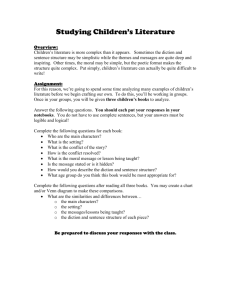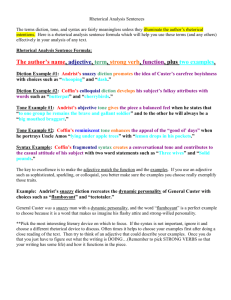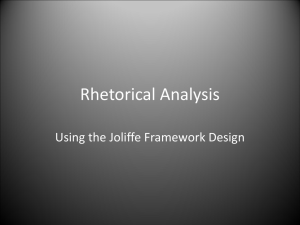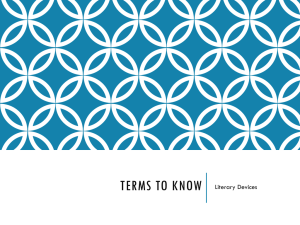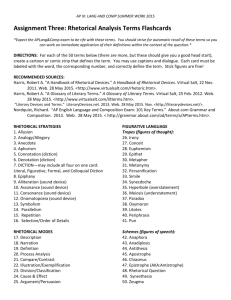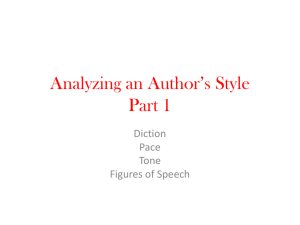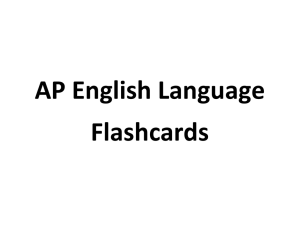Notes on Rhetoric - Rose Tree Media School District
advertisement
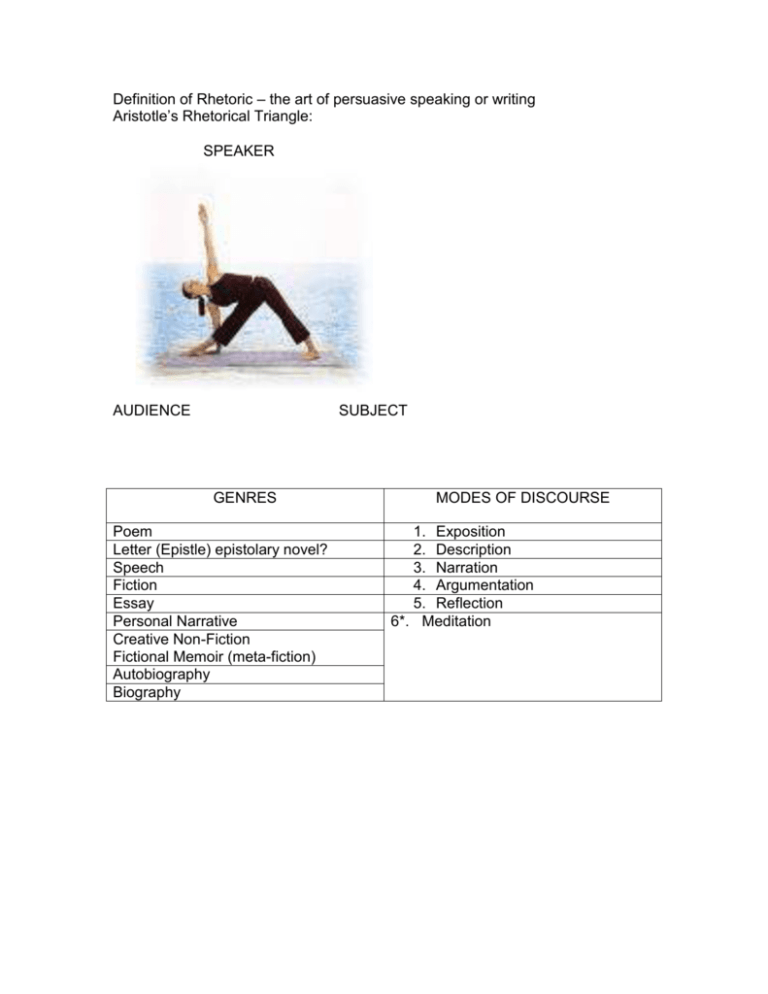
Definition of Rhetoric – the art of persuasive speaking or writing Aristotle’s Rhetorical Triangle: SPEAKER AUDIENCE SUBJECT GENRES Poem Letter (Epistle) epistolary novel? Speech Fiction Essay Personal Narrative Creative Non-Fiction Fictional Memoir (meta-fiction) Autobiography Biography MODES OF DISCOURSE 1. Exposition 2. Description 3. Narration 4. Argumentation 5. Reflection 6*. Meditation Rhetorical strategies and stylistic devices Rhetorical Forms -Narrative (first-person vs. third person) -Compare & Contrast -Cause & Effect -Extended Definition -Division & Classification -Process Analysis Diction – word choice (“diction conveys meaning”) - Latin phrases = formality vs. slang = informality - scientific jargon conveys objectivity? - mixed diction = mixed feelings? Ex: Barry Lopez calls the vandals “infidels,” which likens the preservation of the desert to a holy war. Tone – attitude of the author (diction helps create tone) *You have a whole cheat sheet for tone in the packet Syntax – word order -Long vs. short sentences (or fragments) -passive voice (“Her head was leaned..”) -polysyndeton & asyndeton -Inverted syntax: antithesis (ask not what your country can do for you but what you can do for your country…) Repetition (anaphora) - (It can be recovered…It can be recovered) Figurative Language, Imagery Metaphor, Simile, Personification – Ethos – ethical appeal (right & wrong; also, establishing credibility) Pathos – emotional appeal Logos – logical appeal Irony Wild card Ex. The more Orwell humanizes the elephant, the more he conveys his shame. The image of…conveys the author’s… Don’t just say what the image is; say what it does and why.





